Stratton SPS to Helebridge STW Rising Main (2023)
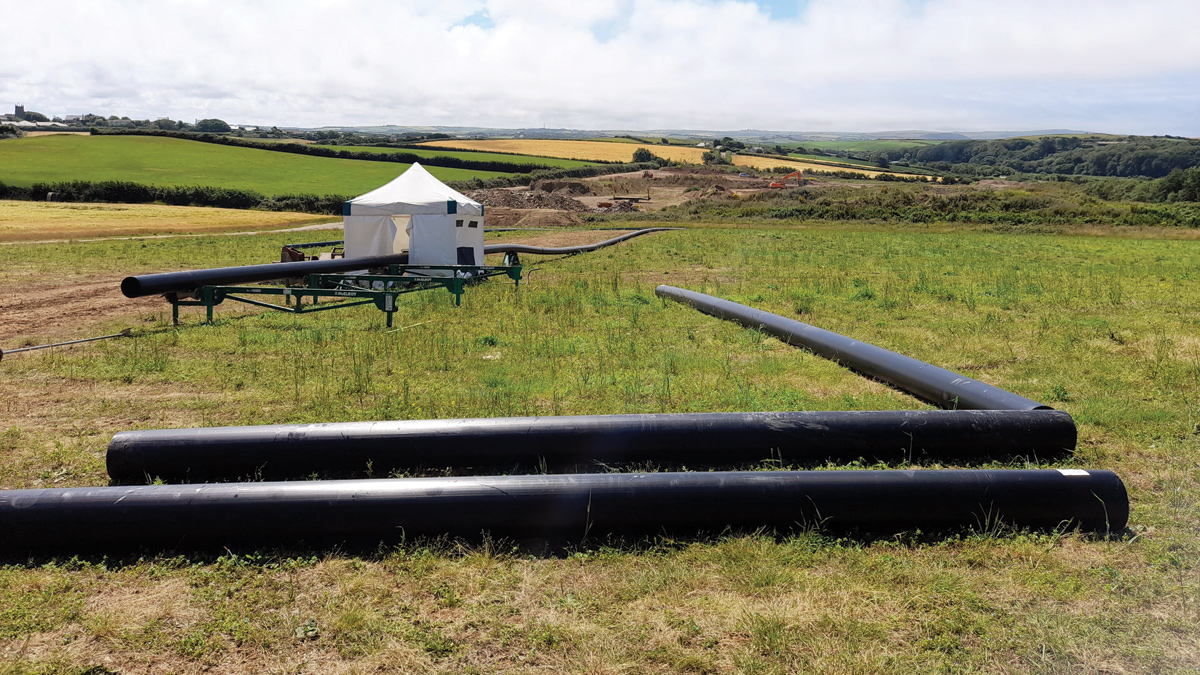
Butt fusion pipe welding set up - Courtesy of Galliford Try
The village of Stratton, which is located just outside Bude, Cornwall, used to have its own sewage treatment works, but this was replaced by a sewage pumping station (SPS) many years ago when it was decided that Bude and the local villages would have all their sewage treated at a single, large treatment works at Helebridge. The Stratton SPS has its own storm tank and an overflow which discharges into a local stream and ultimately the River Neet, which in turn discharges into the local Bude Bathing Water Area. South West Water had a driver to ensure the Bude Bathing Water Area would meet the design standard of no more than an average of two significant (>50m3) spills per bathing season (as per Environment Agency definition).
The problem
In order to deliver the required bathing water quality driver, the Stratton SPS had to significantly reduce the volume and number of overflow discharges. The pumping station site itself is quite small and given the volume of stormwater which had to be held on site, it was deemed both impractical and not cost effective to try and store this liquid on site.
The solution
Galliford Try was employed by South West Water to find a solution to meet the bathing water driver. The most cost-effective option was to upgrade the existing Stratton SPS in order to increase flows to the Helebridge STW from 17 l/s to 75l/s, based upon a 2050 design horizon. This would negate the need for any additional stormwater storage at the pumping station location. The Helebridge STW falls under a different regulatory permit to the other sites around the Bude area as it has its own long sea outfall, therefore no further stormwater storage would be required at this site even though the project would significantly increase the Stratton pass forward rate.
A new pipeline was required between Stratton SPS and Helebridge STE to accommodate the increase in pass forward flows.
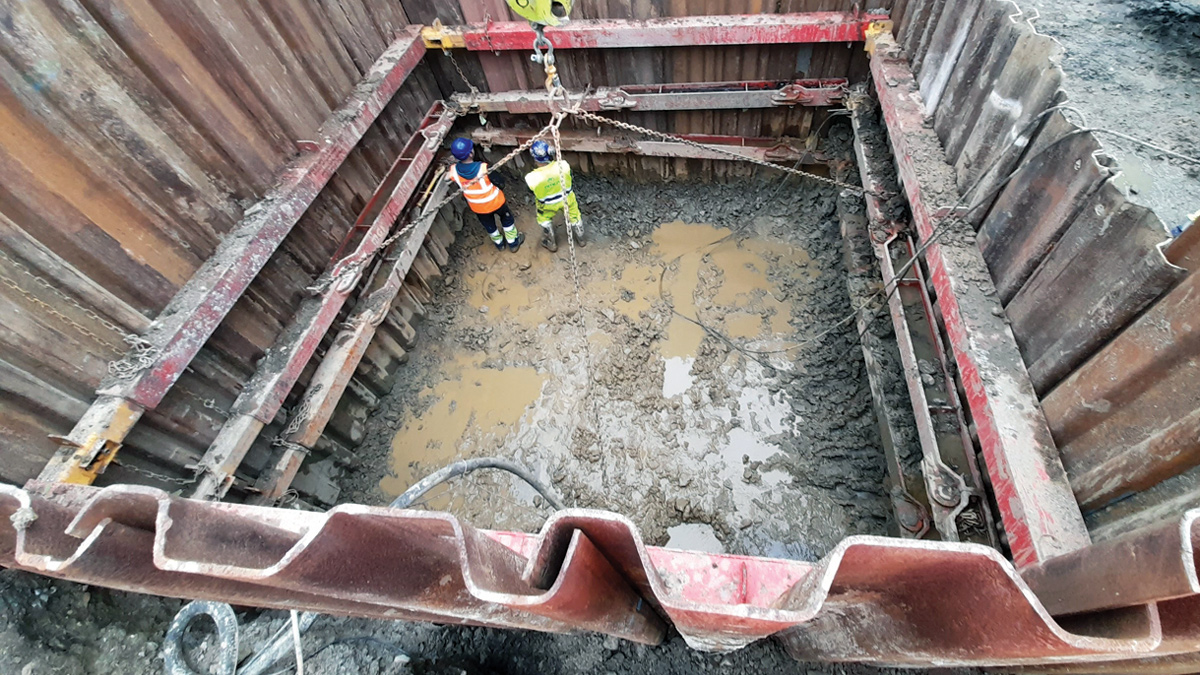
Stratton SPS temporary works installation – Courtesy of Galliford Try
The new pumping station
The existing Stratton SPS was designed and sized to only pass forward 17 l/s and therefore the existing structure could not accommodate the new pumps and associated requirements. During storm events, dry weather flows increased around ten-fold and this range was deemed too great to achieve efficiently with just a single pump, therefore three identical pumps were chosen which would operate as duty, assist and standby. As the existing building’s dry and wet well configuration did not lend itself to this arrangement, it was decided to construct a new wet well into which the three submersible pumps could be placed. The existing control building however did have sufficient space to house the new control panel.
Due to the site size and arrangement, it was not possible to construct the new wet well chamber where flows entered the site, therefore a new chamber, along with a valve chamber and manifold were constructed on the opposite side of the existing pumping station building.
A new pipe was installed through the existing dry well to enable incoming flows to the site to reach the new pumping station location. The existing SPS had to be maintained in full working order during the construction works so a suspended stainless steel channel was designed and installed in the existing wet well to bridge the wet well chamber and transfer incoming flows to the new pipe which passed through the dry well chamber. A gate valve installed on the new pipe was kept closed during construction and this allowed flows within the channel to overflow into the existing wet well chamber where it was passed forward by the existing pumps. The channel also allowed the site storm tank, screen and overflow to continue to operate unaffected by the construction works. Once flows were needed for the new SPS commissioning period, the valve could be opened and this would direct flows to the new station rather than the old one. The channel also provided permanent shuttering when it came to filling in the existing wet well chamber. The filled chamber was capped in concrete and benched to enable storm flows to pass up through the existing screen and into the storm tank, and once full, also allowed the site to overflow from its existing location.
Ground conditions for the new 4m diameter, 3.6m deep pumping station were not ideal, so a designed sheet pile cofferdam was undertaken. Due to narrow access lanes and lack of available space on site, all equipment and precast rings were delivered to the sister project being undertaken at Marhamchurch, then loaded onto a tractor trailer and transported to the works.
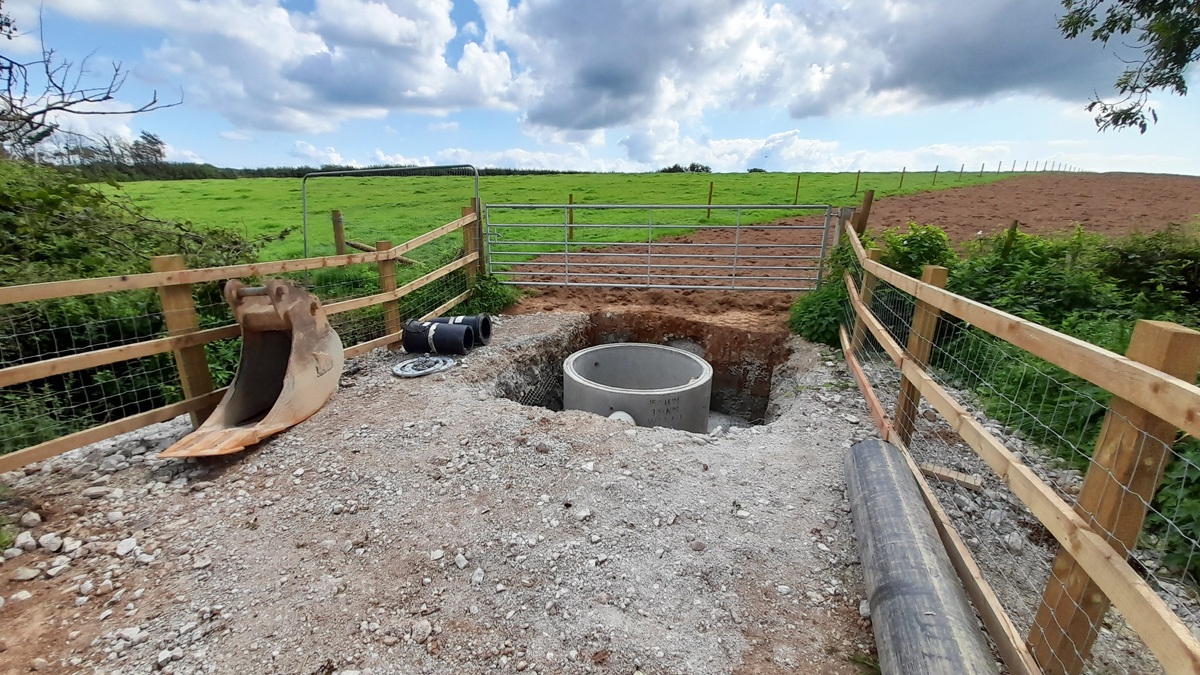
Washout chamber construction – Courtesy of Galliford Try
New rising main: route
The existing rising main route from Stratton SPS to Helebridge STW was not the most logical route for the new main to follow. It was clear that a more efficient route could be found which would reduce the overall elevation of the new main relative to the pumping station and also reduce the overall length. At pre-construction phase, various routes were identified using maps and other available data which were scrutinised by the Galliford Try design, construction and client estates team. Landowner acceptance of work being carried out on their land was as important as the routes buildability to South West Water as the aim was to work with the local community in delivering the overall improvement to the Bude Bathing Waters. Once a preferred route was chosen and agreed with key stakeholders, a comprehensive topographical and ecological survey was undertaken along the proposed 2.1km route, and this resulted in only a few minor tweaks to the final alignment.
New rising main: buildability
The construction team had the option of using either ductile iron or PE pipes as the preferred pipeline material choice. At the Stratton SPS end, the River Neet was classed as an EA major river, in the middle there was a 315mm medium pressure gas main, and at the other end of the rising main there was a horse gallop track; the pipeline had to cross all three of them.
The gallop track owner and EA would not permit an open cut pipe laying solution, so directional drilling became the preferred installation method which also pleased Wales & West who operated the medium pressure gas main. As the pipelines were being installed in the summer months together with a few lane and hedge bank crossings, it was decided to directionally drill the entire rising main with the aims of reducing arisings and virgin material requirements and reducing time on site, providing both a cost and CO2 reduction. A 315 PE main was therefore chosen as the pipeline material and a team was deployed ahead of the directional drilling team to butt weld the pipes together in 100m long runs.
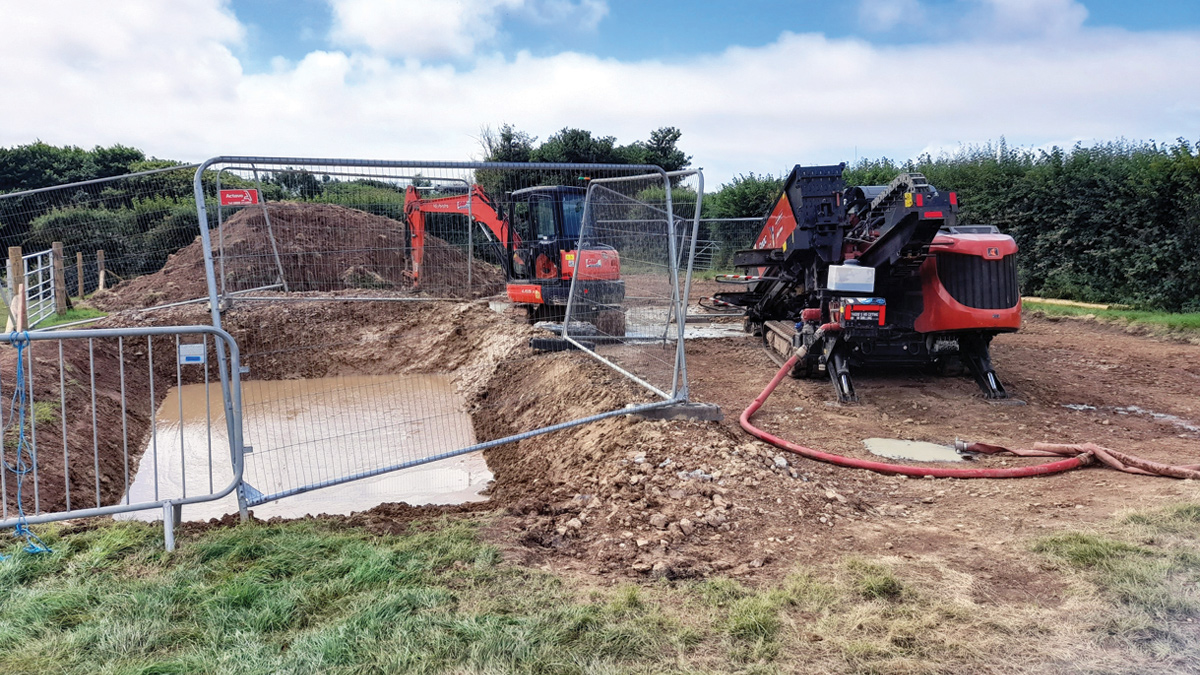
Directional drilling remote field set up – Courtesy of Galliford Try
New rising main: construction
In order to achieve the required depth under the River Neet, the rising main had to be drilled from the pumping station manifold location. A steep hill was present the other side of the river so this initial drive was in excess of 250m long. Given the restricted working area available at the pumping station location, a drilling fluids recycling plant was used utilised to reduce the amount of water and arisings movements required. At other locations along the rising main, local lagoons were created into which the drilling fluids could be settled then disposed of. Through conversation with local landowners, it was identified that most of the fields the main were to pass through were going to be re-seeded later in the year, and given the soil was dry due to the summer weather, the land owners permitted plant to travel directly on the existing pasture. The logic being that this would be less damaging to the soil structure than undertaking a full top soil strip along the easement, as the over compaction would be remedied when the field was reploughed just a few months later.
The local rock formation was very shallow and in places had less than 100mm of top soil cover. The rock is known as Bude Metasandstone and is known to be extremely hard in places. The directional drilling rig managed to successfully drill below the river, gas main and gallop track, but in other places struggled to achieve the required line and level. In the end, the only option was to open cut around 400m of the main with the cut being over 5m deep in places to achieve the required level. Thankfully due to the competency of the rock, this could be battered back and open cut.
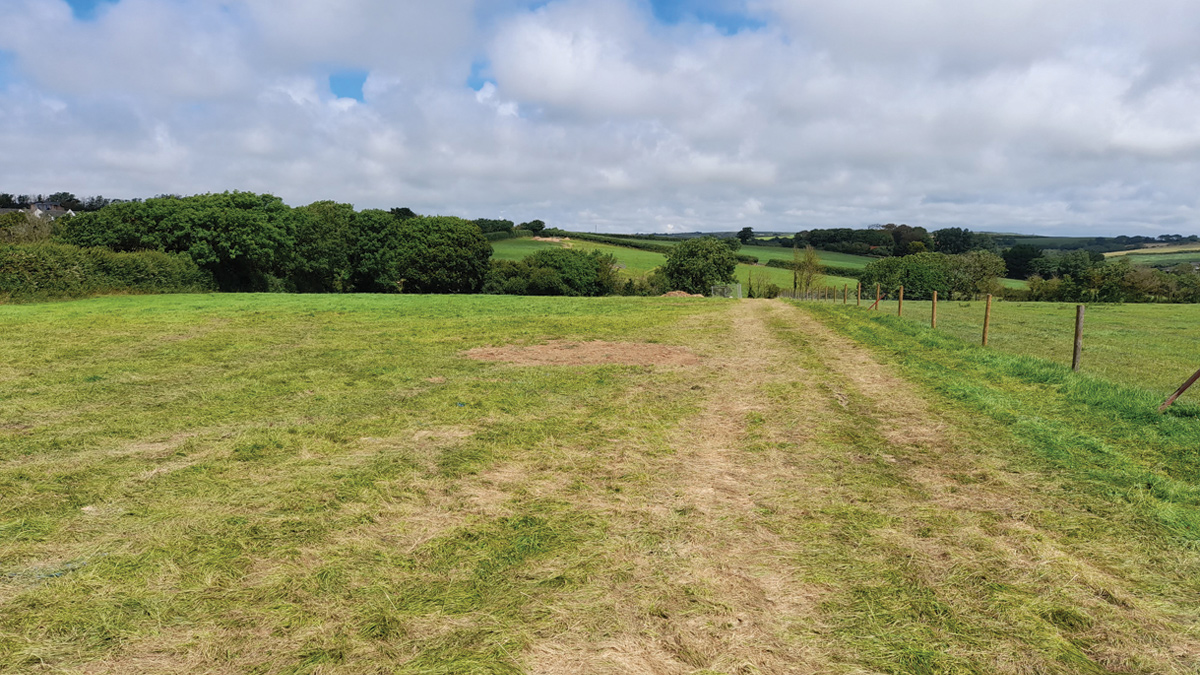
Directional drilling helped minimise impact on farmland – Courtesy of Galliford Try
Along the rising main route there were sensitive fibre optic cables to cross and additional control measures were required to safely locate and expose these through hand excavation with a full watching brief put in place when drilling the new main past these services.
The A39 which is a major road in this area, also had to be crossed. The local council were not keen for the rising main to be drilled below this section of the road as it was constructed on an embankment, there was however an agricultural culvert nearby. Through conversations with the local council structures department, it was established that the concrete running surface in the culvert was not the structural floor but was actually built on top of a thin layer of Type 1 stone. The acceptable solution to both the council and land owner, who used the culvert, was to cut a trench through this concrete running surface down the middle of the culvert, dig out the stone and place the pipe in trench and backfill with structural concrete. This provided just enough protection to the new main and allow the existing culvert clearance to be maintained.
Stratton SPS to Helebridge STW Rising Main: Supply chain – key participants
- Client: South West Water
- Designer & contractor: Galliford Try
- Directional drilling: GMAC Utilities Ltd
- Temporary works/shoring: MGF Ltd
- Agricultural work & plant hire: AJ Heywood & Sons
- Precast concrete: Marshalls Civils & Drainage
- Pumps: Pump Supplies Ltd
- Generators: Addicott Electrics Ltd
- Instrumentation: Xylem Water Solutions
- Fencing: Topan Fencing
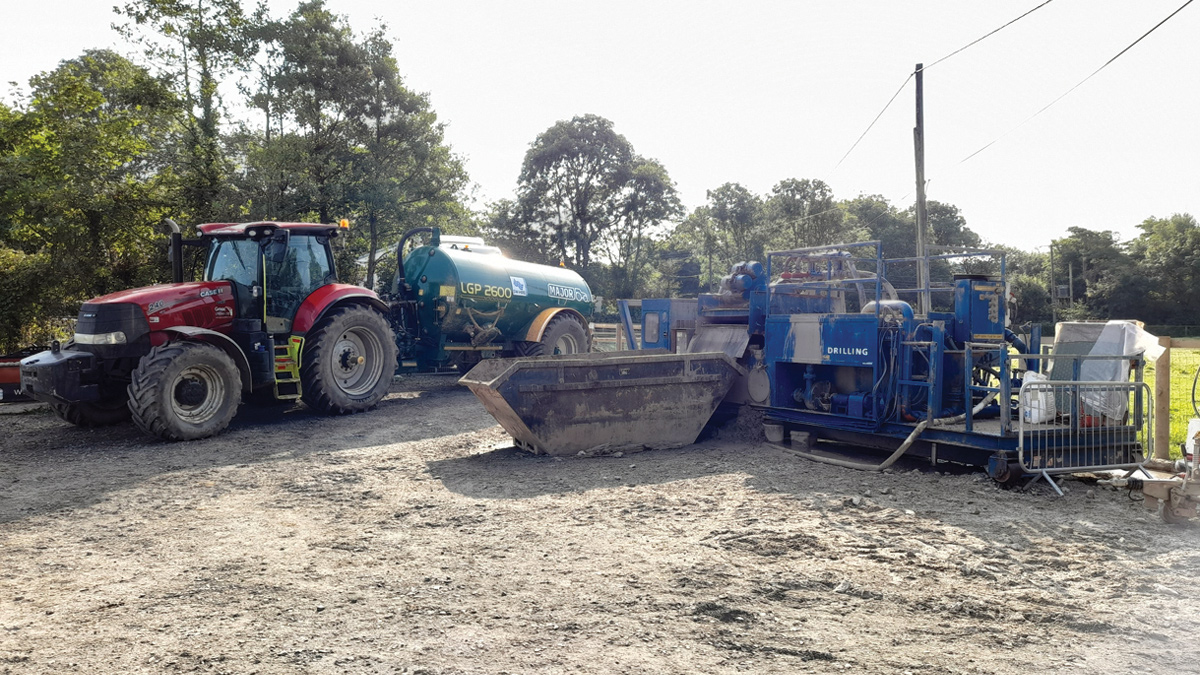
Directional drilling recycling unit – Courtesy of Galliford Try
Working with the local community and stakeholders
The Cornish countryside is known for very narrow, winding lanes with steep hedge banks. This presented the project delivery team with an issue of how to get lorry loads of materials delivered to the working locations. Luckily the sister project at Marhamchurch had good access from the main road for articulated vehicles and a large hardstanding laydown area. A local agricultural plant company based in Marhamchurch itself were engaged at the start of the Stratton project to assist with material logistics. As the hire company was only five minutes down the road, the team was able to call for assistance as/when required in 30 minute time slots. As the hire company also provided plant and assistance to the local farming community, strong relationships were already established, along with good knowledge of the local road network. This helped enormously in being able to traverse the network of Cornish lanes without upsetting any of the local stakeholders.
Extensive letter drops were undertaken along key haulage routes for this project to ensure local residents understood why material movements were being undertaken in their area, and what benefit it would provide them and the local community. This helped enormously in keeping contacts with the dedicated project Client Liaison Officer to a minimum, with most contacts as a result of third party activities not associated with this project.
The existing site was located at the end of a narrow dirt track with no room for construction vehicles or laydown. An agreement was made with the adjoining landowner to stone up and fence off an area which we could use as a construction compound, it would then be dressed and handed over to him upon completion of the works as a parking/storage area. This created a future asset for the owner and saved time, money and CO2 emissions for the project.
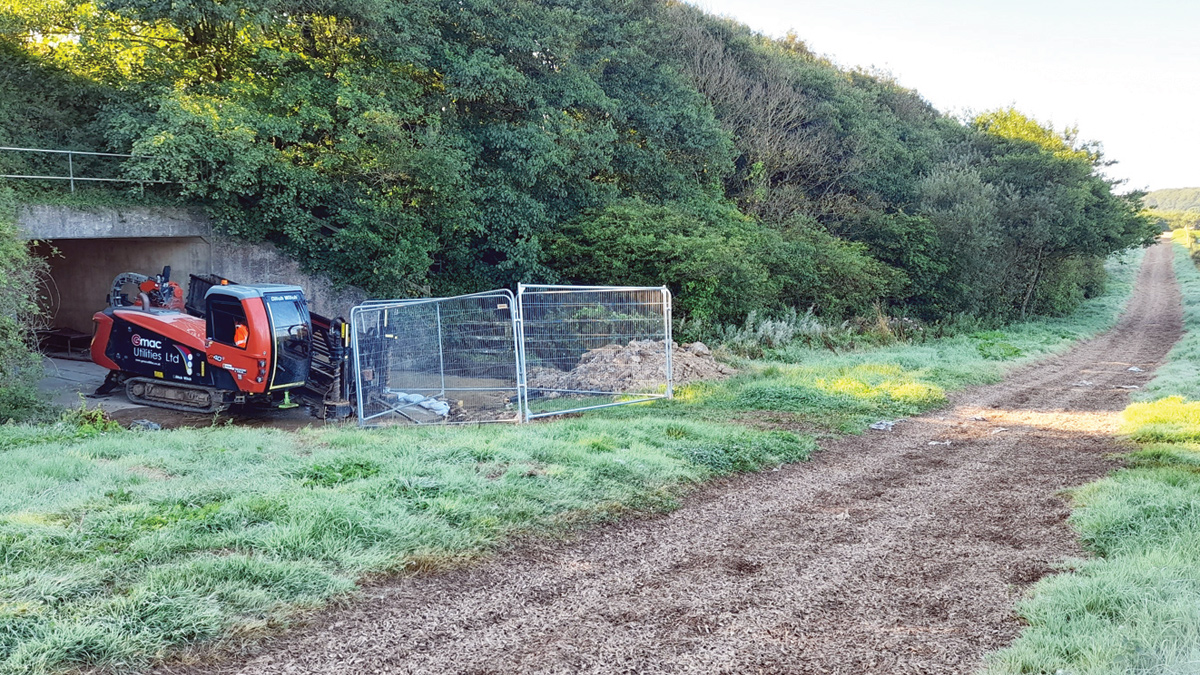
Directional drilling below sensitive gallop track – Courtesy of Galliford Try
As previously mentioned, one of the landowners had a gallop track which the new rising main had to pass under. Part of the farmer’s business was specialising in race horse breading and training, and the gallop track was a highly engineered training surface where race horses could reach speeds of around 30 mph. The landowner was concerned that by open cutting the track, groundwater paths could change and result in a boggy area developing and this could cause significant injury to a jockey or race horse. It was agreed that directionally drilling below the track was an acceptable solution and whilst working in this area, additional controls were put in place as the gallop track remained operational through the construction work. On a few occasions, the site team got to hear and feel what it was like when race horses were running at top speed just a few meters away from where they were working, something which none of them will forget.
Programme
Construction of the £1.75m rising main project started in June 2021 with project completion in July 2022.






